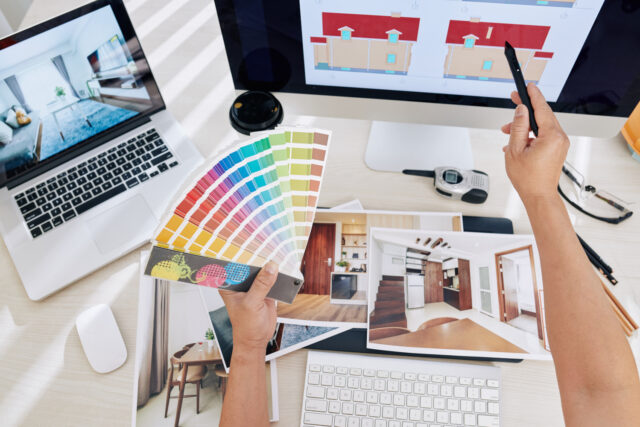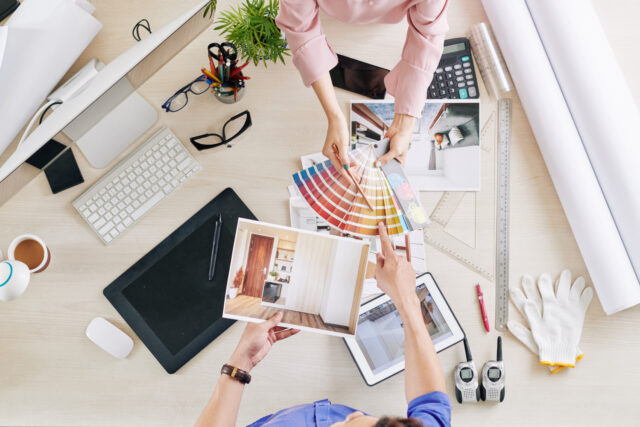The Business of Design
Level Up Your Design Game: How Tech is Transforming Interior Design
The interior design industry is experiencing a digital revolution, and those who embrace technology are the ones shaping the future of design. Here’s how technology is impacting the industry, making it more efficient and innovative than ever. Immersive Experiences with VR and AR: Imagine stepping into your client's dream living room before it even exists. Virtual Reality (VR) allows for...
Building a Sustainable & Scalable Design Business
You've got the eye for color, the knack for spatial planning, and the ability to translate a client's vision into stunning reality. But the world of interior design isn't all about curated fabrics and statement lighting. To truly thrive, you need business acumen as well. Here's a peek behind the curtain at the three pillars of a flourishing design...
From Demanding to Delighted: A Field Guide to Taming Difficult Design Clients
As an interior designer, you're not just transforming spaces; you're turning clients' dreams into reality. However, this journey isn't always smooth, especially when you encounter difficult clients. Here’s a few tips on how to navigate these challenging interactions with grace and professionalism. Know Your Beast Difficult clients come in many flavors. There's the micromanager who nitpicks every detail, the indecisive waffler,...
Insta-worthy Interiors: Mastering Social Media for Interior Design Success
Want to transform your social media presence and turn followers into paying clients? Savvy interior designers are leveraging the power of social media to stand out from the crowd. Let’s explore some winning strategies to take your social media game to the next level. 1. Tell a Story with Every Post Go beyond just showcasing finished projects. Ignite curiosity by sharing...
The Other Side of the Mood Board: Business Strategies for Interior Designers
The Other Side of the Mood Board: Business Strategies for Interior Designers You’ve got the design chops, the trendsetting eye and the ability to transform a space into a client’s dream. But let’s face it, running a successful interior design business is about more than just creating stunning aesthetics. Project management and client relationships are the cornerstones of a thriving...
Designing Success: Proven Marketing Moves for Interior Designers
Standing out as an interior designer in today’s world requires a strong brand identity. But with so much competition, how can you effectively reach your target audience and showcase your unique style? Here are some actionable marketing strategies to stand out as an interior designer: Niche Down and Claim Your Expertise: Gone are the days of being a jack-of-all-trades. Identify a...
Cracking the Code on Client Communication: A Guide for Interior Designers
Effective communication is the cornerstone of a successful interior design. Clients come with a range of concerns, from merging design styles to maximizing a small space or staying on budget. Here are some quick tips to navigate these common roadblocks and foster a smooth design journey: Style Fusion Confusion? Mood boards are your secret weapon! Let clients explore a variety of...
The Rise of Sustainable Materials in Interior Design: A Shift Toward Eco-Conscious Practices
The interior design industry is evolving, adapting to a stronger focus on sustainability and environmental care. Notably, the American Society of Interior Designers (ASID) has reported a growing preference among consumers for spaces that are both aesthetically pleasing and environmentally conscious. This shift towards sustainability is influencing everything from the selection of materials to how projects are conceptualized and...


















